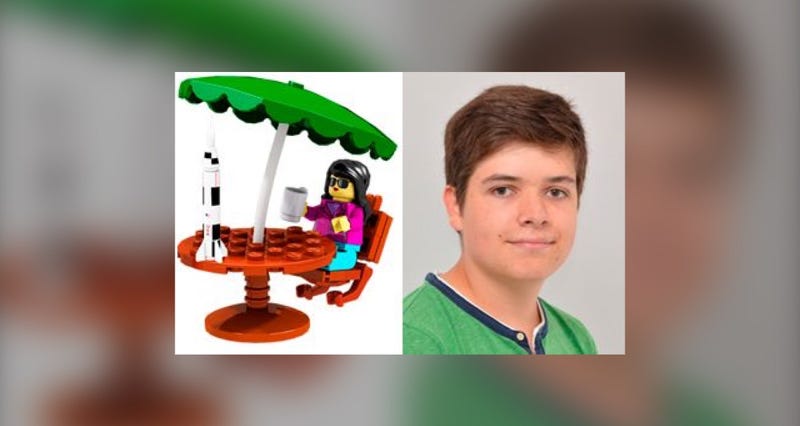LEGO Ideas - Nasa Apollo Saturn V
The Designers - Valerie Roche and Felix Stiessen
With a shared passion for both space exploration and LEGO building, Valerie Roche (aka Whatsuptoday) and Felix Stiessen (aka Saabfan) worked closely together to create their impressive Apollo 11 Mission model for LEGO Ideas.
“The most challenging part was the Lunar Landing module. I (Felix) tried building it as small as possible (I wanted it to fit in the half-cone parts as seen in the model) while still looking good and accurate. After that, we began building the rocket around it. We also tried to make the rocket as sound as possible so Valérie included pillars and beams inside for structural integrity.”
“It actually took quite a long time to finish the whole model. There were often times when one of us just abandoned the project for a few weeks and came back to it later, however, thanks to the fact that it is a collaborative project it was always the case that one of us continued making progress on the project and re-motivated the other. All in all we would say it took us about a year to complete.” “We were surprised (and happy of course) when we learned our model would be the latest one in the LEGO Ideas series. What we like about the Lego Ideas platform is the feedback and support you get from the community. It’s great to reply to comments, read suggestions and improve your model in the updates. Of course the chance of designing your own Lego set is also really cool!”
“It actually took quite a long time to finish the whole model. There were often times when one of us just abandoned the project for a few weeks and came back to it later, however, thanks to the fact that it is a collaborative project it was always the case that one of us continued making progress on the project and re-motivated the other. All in all we would say it took us about a year to complete.” “We were surprised (and happy of course) when we learned our model would be the latest one in the LEGO Ideas series. What we like about the Lego Ideas platform is the feedback and support you get from the community. It’s great to reply to comments, read suggestions and improve your model in the updates. Of course the chance of designing your own Lego set is also really cool!”
The Apollo Program
On May 25, 1961, President John F. Kennedy challenged his country to safely send and return an American to the Moon before the end of the decade. NASA met that challenge with the Apollo program. It would be the first time human beings left Earth orbit and visited another world. The Apollo program played a crucial role in space exploration and made it possible to explore more distant worlds further in the future. The Apollo program consisted of 11 spaceflights. The first two missions, Apollos 7 and 9, were Earth orbiting missions used to test the Command and Lunar Modules. The next two, Apollos 8 and 10, tested various components while orbiting the Moon, also taking photographs of the lunar surface. While Apollo 13 did not land on the moon due to a malfunction, a total of six other missions did and returned with a wealth of scientific data and almost 400 kilograms of lunar samples. The first manned mission to the moon was Apollo 8. It circled around the moon on Christmas Eve in 1968. Just over six months later on July 20, 1969, the world witnessed one of the most astounding technological achievements of the 20th century when a NASA astronaut on Apollo 11 became the first human to set foot on the Moon. The Apollo 11 mission lasted 195 hours, 18 minutes and 35 seconds - about 36 minutes longer than planned. After lunar orbit insertion, the Command Module (CM) and Lunar Module (LM) separated. While one crew member remained in the CM, which orbited the Moon, the other two astronauts made the historic journey to the lunar surface in the LM. After exploring the surface and setting up experiments for 21 hours and 36 minutes, the astronauts returned safely to the CM and began the journey back to Earth.
Saturn V
Saturn V was the most powerful rocket that had ever flown successfully and was used in the Apollo program in the 1960s and 1970s. The rocket was 111 meters (363 ft.) tall and weighed 2.8 million kilograms (6.2 million pounds) when fully fueled for liftoff. The Saturn V used for the later Apollo missions had three stages. Each stage would burn its engines until it was out of fuel and would then separate from the rocket. The engines on the next stage would fire, and the rocket would continue into space. The first stage had the most powerful engines, since it had the challenging task of lifting the fully fueled rocket off the ground. The first stage lifted the rocket to an altitude of about 68 kilometers (42 miles). The second stage carried it from there almost into orbit. The third stage placed the Apollo spacecraft into Earth orbit and pushed it toward the moon.
